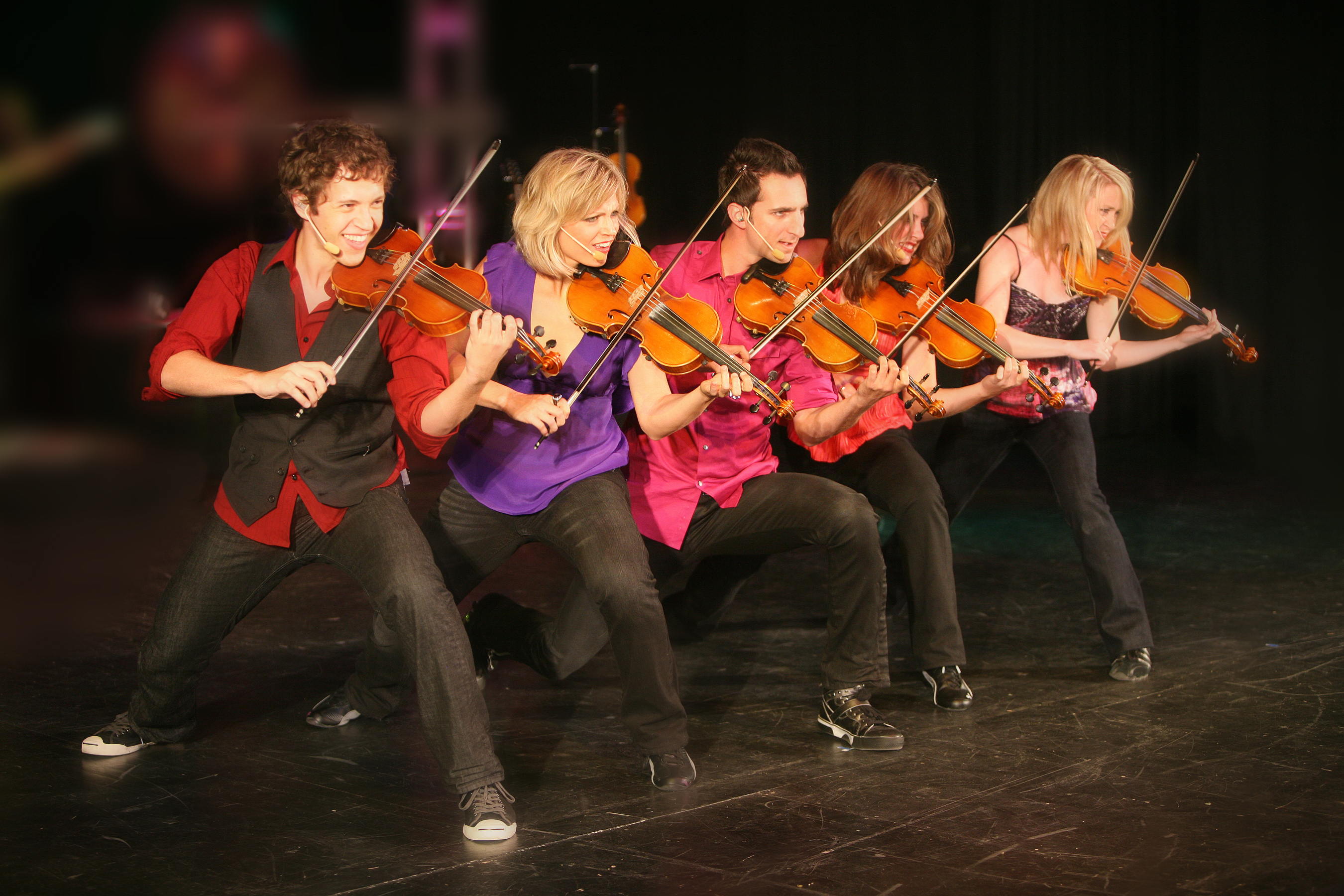My Ideal Orchestra – Barrage
My Ideal Orchestra – Barrage
I get paid to live my dream.
Twenty years ago, when I began playing the violin, alternative strings were just that – alternative. Most private teachers were not telling their students to listen to both Paganini and Ponty, nor were they suggesting that after learning a Bach partita students work on “Foggy Mountain Special” by Earl Flat and Lester Scruggs. Most school orchestra programs stuck to classical standards, teaching major and minor scales, arpeggios, and sight reading while ignoring modalities, chord progressions, and improvisation. Consequently, string students grew up ready to play symphonies and wedding music, but were ill-prepared to sit in on a jazz jam or hoedown. Of course, there were pockets of resistance to the close-mindedness of the classical string world: Stephane Grappelli, Mark O’Connor, Mark Wood, the Turtle Island String Quartet, and even the United States Air Force Strolling Strings all pushed the antiquated stylistic boundaries of string instruments. There were also forward-thinking music educators creating alternative string groups in their schools, which allowed students to discover that their instruments could be used to play not only classical music but jazz, bluegrass, swing, rock, even mariachi tunes!
Then, in the late 90s, the alternative strings world was rocked by the emergence of Barrage, an in-your-face alternative violin show. Having seen the success of Riverdance and Stomp, the creators of Barrage questioned, “Well, why not a violin show?” and soon had a PBS special on TV. Since its creation 13 years ago, Canadian-based Barrage has wowed crowds in 24 countries including China, Guatemala, Denmark, the United States, and Canada with its combination of very difficult and impressive music, choreography, and atmosphere. Barrage provides theater and festival patrons with an experience that is truly unique.
It turns out that “unique” element was exactly what was missing from my musical life, though it wasn’t until I was a senior in high school that I realized this. As concertmaster of my high school’s orchestra, I had trouble keeping my feet planted firmly on the ground– usually, I ended up just letting my feet dance while I kept my body (mostly) on the chair. People would come up to me after concerts to tell me that they really enjoyed watching me “dance in my seat” while playing the concerts; however, I knew that, were I to follow the path of most violinists, a professional symphony orchestra would never allow me to move in that way. I needed something that blended fun music with movement, something that paid the bills while allowing me to enjoy the musicianship that I had been cultivating since I was five.
This was the battle I was fighting with my violin during my senior year of high school. Then, I saw Barrage for the first time.
The violinists were all solid musicians!
They sang!
They danced!
They interacted with the audience!
They had fun with their instruments and each other!
It was my dream come true! After the concert, I told all of my orchestra friends that I had been born to perform with Barrage, that I was someday going to audition for the group, and that I was going to perform in the group. Everyone loved the idea — how could we not?
However, the immediacy of real life was squashing my future dreams, so I threw myself headlong into the University of Miami’s Music Education program. I had known for many years that I was going to be a music teacher: I wanted to follow in the footsteps of my public school orchestra directors who had been such strong influences in my life. I saw Barrage twice more during college, but each time, the dream of joining the group seemed more and more unattainable. I wasn’t good enough; I was already pointed in a successful life direction; I was about to start student teaching and wouldn’t have time to do all the work involved with auditioning.
Halfway through my last semester of college, while busy student teaching elementary general music and middle school orchestra and music theory, I heard about an opening for a male violinist in Barrage! This was my chance, but I was so busy, and I had convinced myself I wasn’t good enough to ever get into the group. Luckily, the insightful advice of a friend who had gone to a Barrage concert with me a few months earlier stuck with me: “Audition. Just do it. What’s the worst that happens? They say no.”
As my middle school orchestra students practiced for their midterm playing test, I auditioned for Barrage. The whole process took about three months from the time I submitted my resume until I was on an airplane headed for Denmark to meet up with the group. I am now in my fourth year performing with the group, and the experiences have been mind-blowing. I have performed in 10 countries, in venues ranging from middle school auditoriums to festivals at the base of the Italian Alps to 2,000-seat performing arts centers to 8,000 seat arenas, with people such as the Blue Man Group, Sinbad, Jerry Seinfeld, Paula Poundstone, and more.
The fact that performing with Barrage is my job is unbelievable, and I’m the first to admit it. Every time I walk onto a stage, I get tingles (yes, still) that I am performing with Barrage, and that I am lucky enough to have the opportunity to bring joy to other people. When I finish my solo piece, I smile to think that I, the Music Education major, am part of more than 250 performances each year. And, when the audiences are applauding our performance at the end of the show, I am reminded that nothing is out of reach if you just want it enough.


No comments yet.
Add your comment